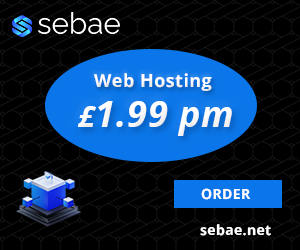
Welcome to the brand new Vim series! In this course, you’ll learn everything you’ll need to know in order to become productive with Vim, a popular UNIX/Linux text editor. You’ll learn how to install it, how to use it, and some quality of life tips to increase your skills. In this episode, you’ll learn more of the basics and expand your knowledge.
*Support Linux Learning and get something Awesome (commission earned)*
• Become a channel member here on YouTube ➜ https://learnlinux.link/join
• Become a Patron on Patreon ➜ https://learnlinux.link/patron
• Receive a 5% discount on an LPI exam voucher ➜ https://learnlinux.link/lpi-voucher
• Affiliate store for Linux compatible hardware/accessories ➜ https://learnlinux.link/amazon
• Mastering Ubuntu Server 4th Edition ➜ http://ubuntuserverbook.com
• My recording gear (commissions earned) ➜ https://learnlinux.link/recording-stuff
• Awesome KVM for your Homelab ➜ https://learnlinux.link/tinypilot
*Other Episodes in this Series*
* Episode 1 ➜ Basic Usage (and how to exit Vim): https://linux.video/vim-1
* Episode 2 ➜ This Video
* Episode 3 ➜ Buffers: https://linux.video/vim-3
* Episode 4 ➜ Visual Mode: https://linux.video/vim-4
* Episode 5 ➜ Splitting Your Vim Window: https://linux.video/vim-5
* Episode 6 ➜ Tips, Tricks and How to Configure Vim: https://linux.video/vim-6
*Individual Sections*
00:00 – Intro
00:49 – Recap from previous episode
03:29 – Taking an initial look at "Buffers"
05:02 – More about normal mode in Vim
05:36 – Deleting single characters
06:16 – Deleting an entire line
06:36 – Moving the cursor with the h, j, k, and l keys
10:36 – Opening another file into your current buffer
11:26 – Saving your current buffer as a new file
13:36 – Running Linux commands from within Vim
*Recommended stand-alone videos from Learn Linux TV*
• Essential tweaks for ALL Linux Servers ➜ https://linux.video/all-servers
• How to create a bootable flash drive for installing Linux ➜ https://linux.video/flash-usb
• Installing an operating system for Raspberry Pi ➜ https://linux.video/pi-imager
• How to connect to a Linux server via ssh ➜ https://linux.video/ssh
• Understanding Linux permissions ➜ https://linux.video/perms
• OpenSSH Guide ➜ https://linux.video/ssh-guide
• How to better secure OpenSSH ➜ https://linux.video/secure-ssh
• 10 Linux Terminal Tips and Tricks to Enhance Your Workflow ➜ https://linux.video/cli-tricks-1
• Over 15 Terminal Tricks You Should Learn ➜ https://linux.video/cli-tricks-2
*Recommended Courses from Learn Linux TV*
• Get up to speed with managing an OpenStack Cloud ➜ https://linux.video/openstack
• Learn how to write your own Bash Scripts ➜ https://linux.video/bash
• Install, configure, and maintain a Proxmox VE Cluster ➜ https://linux.video/pve
• Automate tedious setup jobs by learning Ansible ➜ https://linux.video/ansible
• Learn how to exit vim (and use it too) ➜ https://linux.video/vim
*Linux-related Podcasts*
• Enterprise Linux Security ➜ https://enterpriselinuxsecurity.show
• The Homelab Show ➜ https://thehomelab.show
*Official Learn Linux TV Sites*
• Main site ➜ https://www.learnlinux.tv
• Community ➜ https://community.learnlinux.tv
*Content Ethics*
The following article covers the rules and guidelines Learn Linux TV abides by:
*Disclaimer*
Learn Linux TV produces technical content that will hopefully be helpful to you and teach you something new. However, this content is provided without any warranty (expressed or implied). Learn Linux TV is not responsible for any damages that may arise from any use of the content and information that’s being provided. The viewer is expected to follow best judgement and to make his/her/their best decisions while working with production or non-production software, systems and hardware.
#CloudComputing #DevOps #Linux










